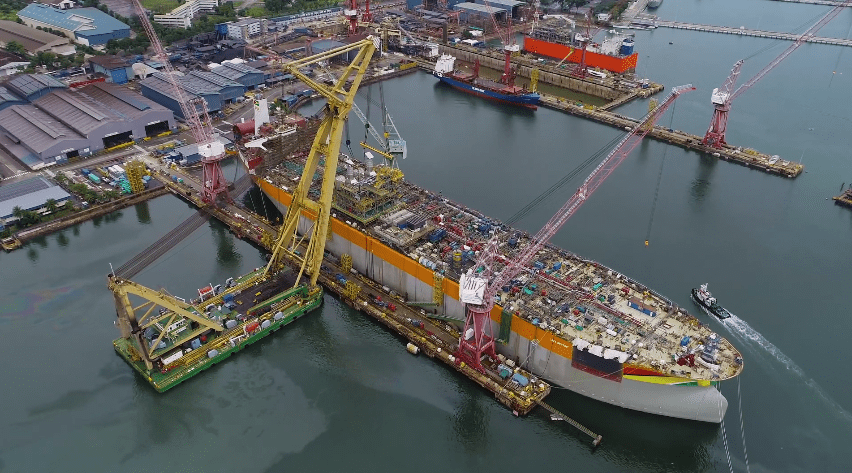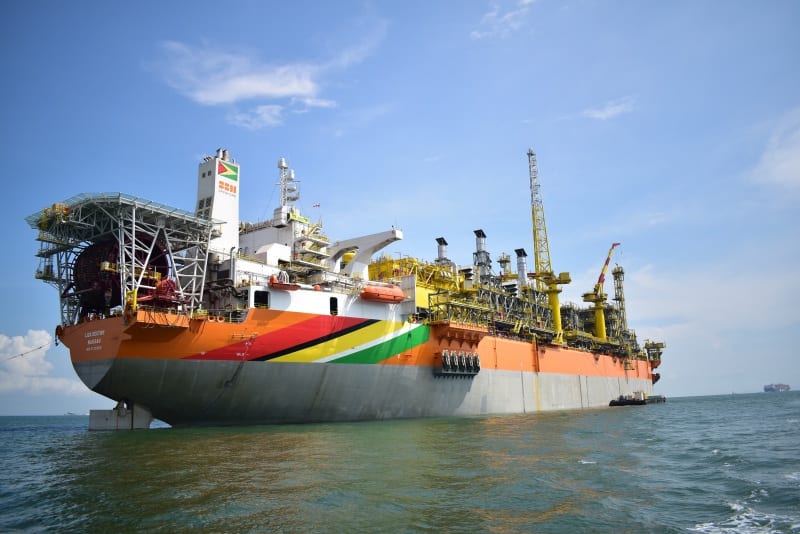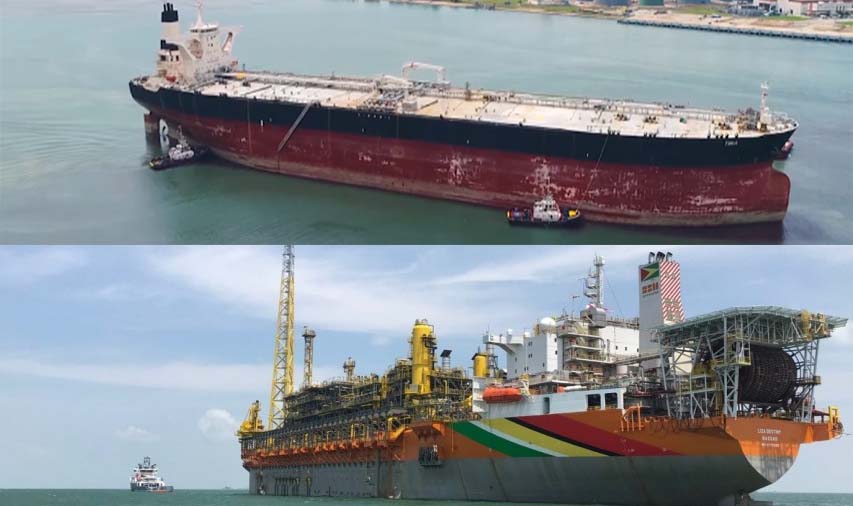The vessel that produced Guyana’s first barrel of oil on December 20, 2019, marking the start of a journey for the South American country that will see it becoming a major producer this decade, was converted from a ship called Tina – a Very Large Crude Carrier (VLCC). The Liza Destiny – an engineering accomplishment made possible by SBM Offshore in a record 20 months – is now spread moored in position at the Liza Field 190 km offshore Guyana at the prolific Stabroek Block.
The construction of the Liza Destiny floating, production, storage and offloading (FPSO) vessel required an efficient process for designing and building this floating oil unit so that it can safely and efficiently manage production in Guyana.

The work to convert the Tina VLCC into what it is today took place in Singapore. Crews there built and added 14 new processing units – which will enable the Liza Destiny to process oil and offload it to a nearby tanker.
And why is it called the Liza Destiny? “Liza” refers of course to the Liza oil field where the vessel will be located. The term “Destiny” was chosen in partnership with the Government of Guyana to acknowledge the importance of Guyana’s new energy industry and the significant potential that it has to benefit the country.
That’s because projects like the Liza Destiny FPSO not only create local jobs—more than a thousand—but also lead to revenue for the country to invest in roads, city infrastructure, health and education services.
Liza Destiny Fact Sheet
- The Liza Destiny is 334 meters long, or the length of more than three soccer fields.
- It is 58 meters wide, or half of a cricket field.
- At 31 meters, its depth matches the length of the Georgetown Lighthouse in Guyana’s capital.
- Construction of those 14 modules took 12 months and construction started in January 2018.
- The modules added 14,000 metric ton of weight to the ship.
- Modules dehydrate and compress oil flowing from the seabed at a rate of ~8,400 pounds per square inch (psi).
- Car tire pressures, by comparison, are generally around 32-35 psi.
- At peak, 7,000 people worked on the Liza Destiny conversion.
- Now it is in operation, about 80 people will work on the vessel, which has the capacity for 120 workers.

Source: ExxonMobil Energy Factor with additional reporting by OilNOW




